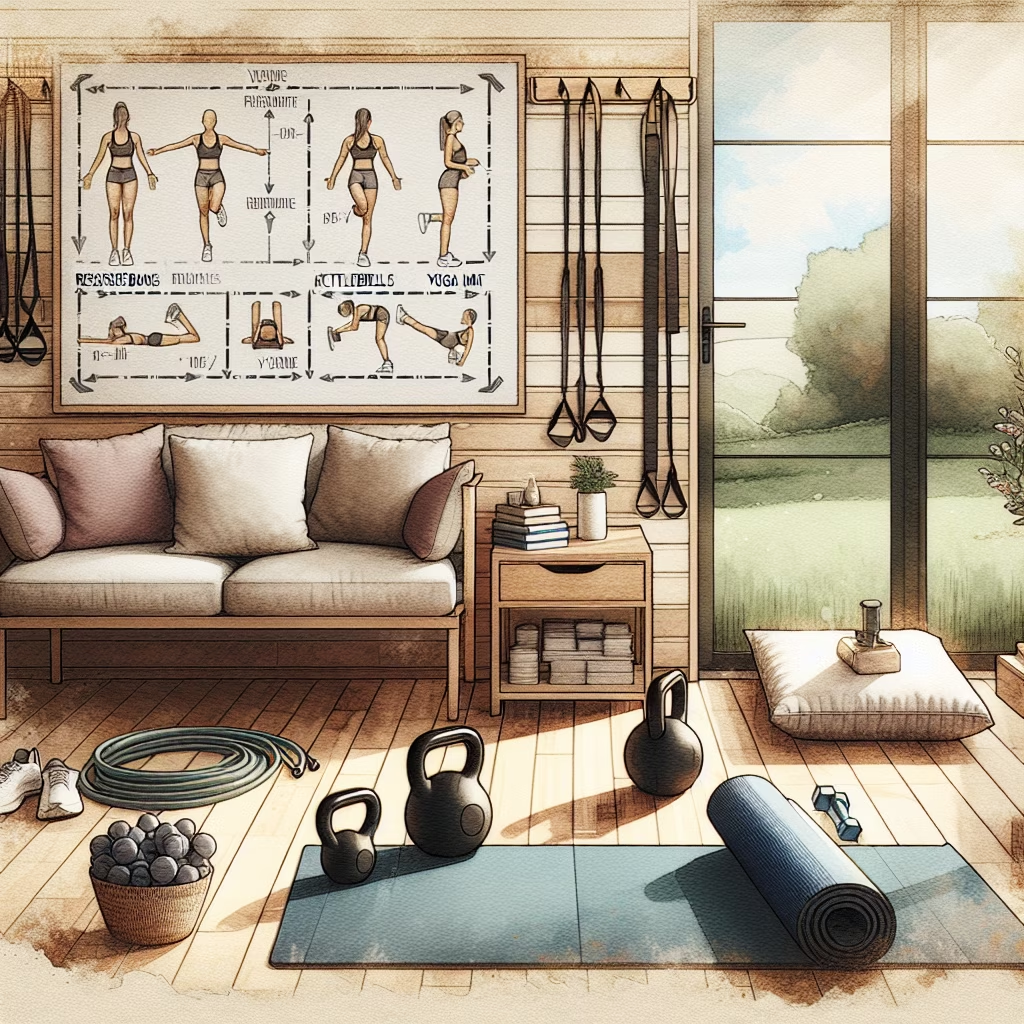Creating a home workout plan can be a game changer for your fitness journey. Whether you’re short on time, don’t have access to a gym, or simply prefer the convenience of working out at home, you can achieve your fitness goals with minimal equipment. This guide will walk you through the steps to design an effective and enjoyable workout plan tailored to your needs.

This document provides a comprehensive guide on how to create a home workout plan using minimal equipment. It covers essential steps such as determining your fitness goals, selecting appropriate exercises, and structuring your workouts. Additionally, it includes tips for tracking progress, staying motivated, and making adjustments as needed. The focus is on simplicity and effectiveness, ensuring that you can stick with your routine and see results.
Creating a home workout plan involves several key steps:
Before you start planning your workouts, it’s essential to know what you want to achieve. Are you looking to:
Things to Note: Your goals will dictate the type of exercises you choose and how you structure your workouts. For example, if your goal is weight loss, you might focus more on high-intensity interval training (HIIT) and cardio exercises. Conversely, if you want to build muscle, you’ll want to incorporate strength training exercises.
You don’t need an entire gym to get a good workout. Here’s a list of minimal equipment that can be very effective:
Personal Thoughts: I find that having just a couple of dumbbells and resistance bands can cover most of my workout needs. You can also use household items like water bottles or backpacks filled with books as weights.
Focus on compound movements that work multiple muscle groups. Here are some effective exercises:
Good Practices: Aim for a balanced workout that includes strength training, cardio, and flexibility exercises. For instance, you can alternate between strength days and cardio days.
Decide how often you’ll work out each week. A good starting point is:
Tips: Consider creating a weekly schedule. For example:
Keeping track of your workouts and progress is crucial for staying motivated. Here are some ways to do this:
Personal Thoughts: I find that tracking my workouts not only keeps me accountable but also allows me to celebrate small victories along the way.
Be flexible with your plan. If you find certain workouts are too easy or too hard, adjust the intensity, duration, or type of exercise. Here are some tips for making adjustments:
Things to Note: Listen to your body. If you’re feeling fatigued or sore, it’s okay to take a rest day or do a lighter workout.
Creating a home workout plan using minimal equipment is entirely achievable and can be incredibly rewarding. By determining your goals, selecting appropriate exercises, and structuring your workouts effectively, you can stay fit and healthy from the comfort of your home. Remember to track your progress, stay flexible, and adjust your plan as needed to keep things fresh and exciting. With dedication and consistency, you’ll be well on your way to achieving your fitness goals!
You can also watch this video tutorial for a visual guide:
Learn how to incorporate AI into your business strategies with this comprehensive guide. From choosing ...
A comprehensive guide on how to prepare for the SAT in 2024, including effective strategies, ...
A comprehensive guide on how to start a sustainable wardrobe in 2024, focusing on eco-friendly ...
Learn how to create an effective remote learning schedule for kids in 2024, including tips ...
A comprehensive guide for beginners on how to start investing in the stock market. Learn ...
A comprehensive guide on how to invest in cryptocurrency safely in 2024, covering essential steps, ...